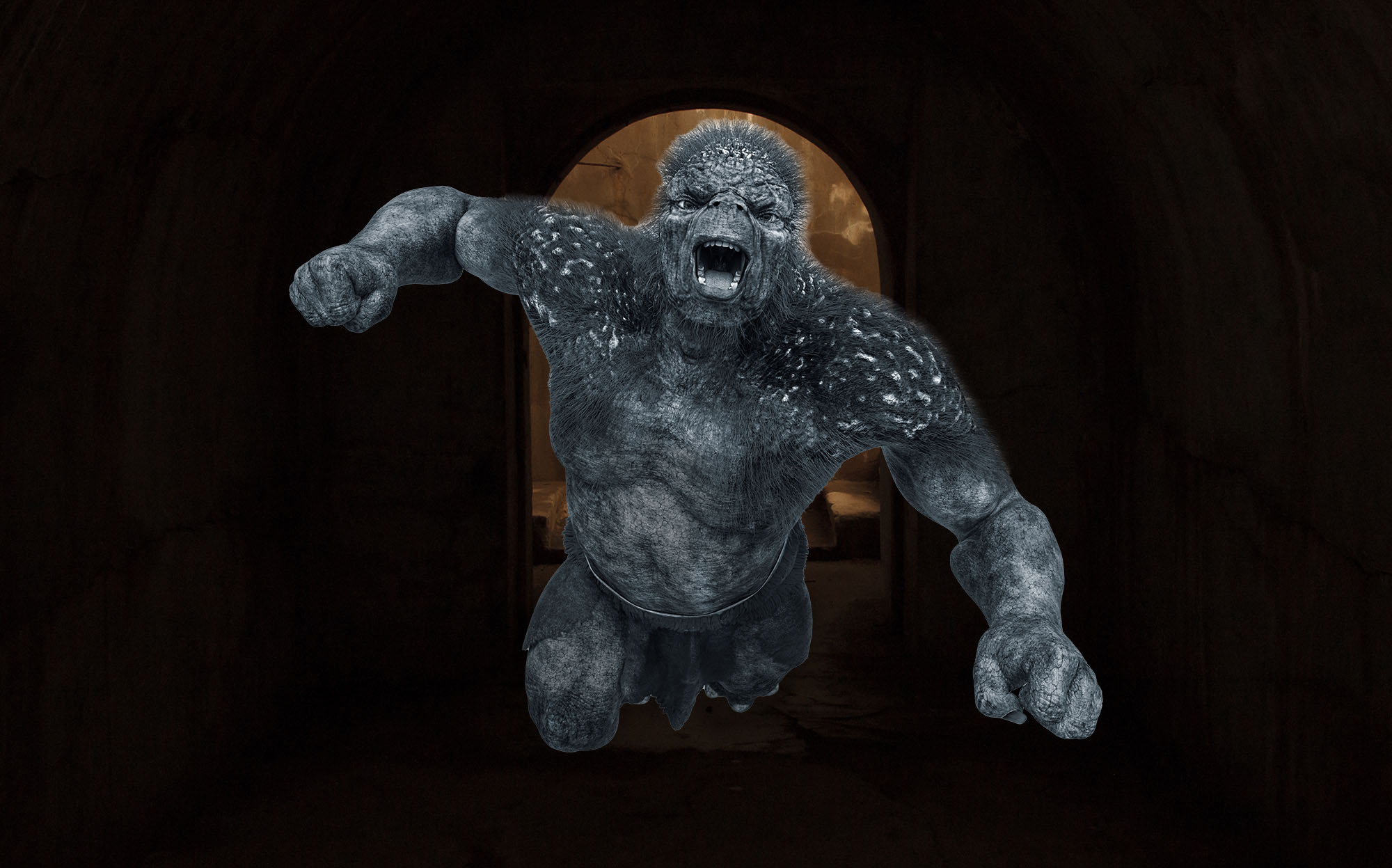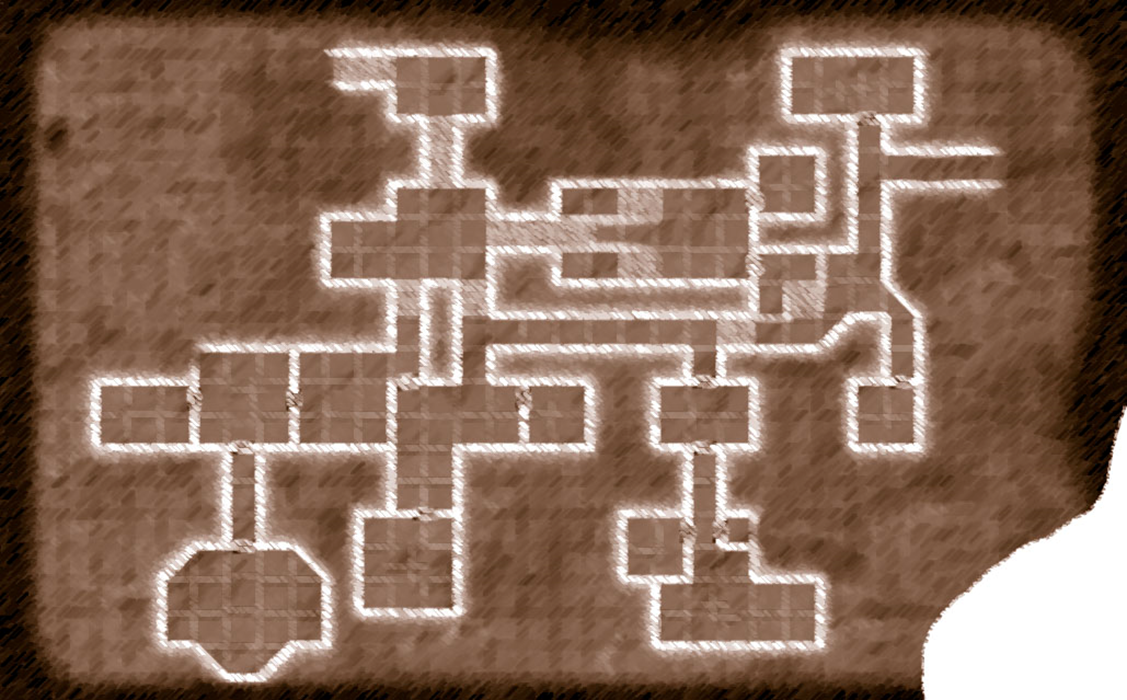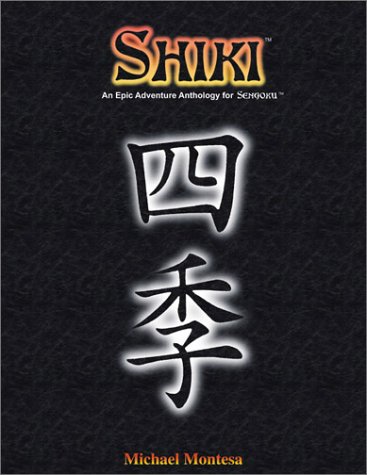 IN THE SHADOW OF THE SPIRE
IN THE SHADOW OF THE SPIRE
SESSION 40D: CHILDREN OF THE HAND
July 25th, 2009
The 22nd Day of Kadal in the 790th Year of the Seyrunian Dynasty

They regrouped in the laboratory. The boy, whimpering in pain, was fading fast.
“Is there anything we can do for him?” Tee asked. Nasira shook her head. Tee, wanting to spare him the pain, slid a dagger through the boy’s ribs and into his heart.
Even as Tee’s dagger was coming free, Agnarr was dumping Silion’s body out of the bag of holding, removing the iron collar from around her neck, and placing it on the boy. A debate immediately broke out: Some wanted to preserve Silion for a second round of questioning. Others wanted to do the same for Malleck.
“We need Malleck to tell us what he’s done with the missing children,” Elestra said.
“We know what he did with them,” Agnarr said. He was adamant that they keep the boy alive, and it looked like the iron collar was the only way to do it.
Tee and Tor, meanwhile, teamed up to track down the priests who had fled from Tee. But when they went into the barracks they could find no trace of them.
“Could they have teleported out?” Tor asked.
“If they did, they could be bringing friends,” Tee said.
“Target practice.”
Stymied as they were, they began tearing the barracks apart. They found a map of a route through the sewers (which appeared to lead back to the Temple of the Rat God), but little else of interest. In a chamber adjoining one of the barracks, however, they found an officers’ chamber. (“Probably belongs to that red-cloaked woman,” Tor said.) On a table near a crystal decanter they found a pair of letters—
LETTERS FROM ILLADRAS TO FREIN
Frein—
I’m tired of seeing your grotesque men skulking around Crossing Street. The concept of discretion is apparently beyond your crude ability to comprehend. I have instructed the Brothers of Venom to take care of the necessary security precautions. Dilar believes they can use the “Brotherhood of Ptolus” to recruit those we’ll need.
Illadras
Frein—
You can mouth all the empty protests you want, it matters little to me. Your threats of taking the matter to Malleck are quite laughable. I am sure that Malleck is already aware of the situation here at the temple. And if you believe that Malleck has more of Wuntad’s ear than I do, I suspect you’re destined for a brutal disappointment.
Illadras
—and as Tor read them out loud, Tee discovered a hidden compartment in the room’s wardrobe which contained what appeared to be a map of the entire temple.

The map revealed a secret door on the far wall of the barracks. It seemed clear that the priests must have used it.
“If they did,” Tor said, “Then they must be long gone. They could have easily taken those stairs to the surface.”
Tee cursed, but thought they should still check out the small complex of rooms beyond the secret door in case the priests were holed up in there.
Directly beyond the door they found an armory well-stocked with a variety of common weapons. The next door, however, led to something far more disturbing: An altar of ebony bedecked with chains of black iron and covered with stains of dried blood. More of the chains depended from the ceiling, and from these hung the corpse of a man – his intestines hanging out from deep, runic gashes carved into his abdomen.
They felt their stomachs churn at the sight and Tee murmured a nearly silent oath to make the cultists pay for their foul debaucheries.
Through the next door they found the missing priests: They had freed two centipedic horrors from the chained collars that kept them here, and as Tor and Tee came through the door they unleashed them for the attack.
The skittering horrors had scarcely gotten halfway across the chamber, however, before Tee had placed a pair of blasts from her dragon pistol through their chitinous skulls. The priests began chanting their dark prayers, but Tor was upon them before they could finish the incantations.
When they returned to the others in the laboratory, they found the debate over the use of the iron collar continuing apace. Tee and Tor quickly saw it settled: The boy would be kept in suspended animation. Tor would bind, blindfold, and gag both Malleck and Silion. Nasira would bring them to the very brink of life and they would hold them there for as long as necessary.
While the others went back to searching the nooks and crannies of the complex, Ranthir settled down to watch over their freshly-bound prisoners while reading through the various manuscripts he had taken from the temple’s library.
The map Tee and Tor had found indicated a second secret panel located in the laboratory. With the map as her guide, Tee was able to easily find and open it, revealing a small chamber with several narrow tables lining its walls. The tables were covered in a variety of alchemical equipment, magical scrolls, enchanted incenses, and the like. Among these was a sack of red velvet that felt hot to the touch. It contained a tiny ember of pure elemental fire, and Tee was delighted to discover that it could be used to create a wide variety of fiery effects.
There were also a plethora of papers, and Ranthir was more than happy to interrupt his reading for even more reading. Many of the papers detailed a variety of alchemical procedures, of which the most important seemed to be the Alchemical Creation of the Children of the Hand.
ALCHEMICAL CREATION OF THE CHILDREN OF THE HAND
Many of these papers are thickly covered in alchemical symbols and notations. Others are a chronological chronicling of what appear to be research experiments.
The alchemical concoction described is meant to be used in conjunction with a mystical ritual (which is not detailed). It appears to be designed to induce extreme mutative behavior in test subjects, and the goal of the process appears to be the creation of “children of the hand”.
The full meaning of this phrase is made horribly apparent as the research notes turn towards studying the efficacy of the procedure. “Only the youngest demonstrate desired manifestations.” Those older than adolescence are described as being “cellularly mortified” and “lacking in morphable plasticity”.
Detailed anatomical reports and autopsy studies detail the results of the procedure: Green and black mottled skin. The skin of the hands turns entirely black and the fingers lengthen into scythe-like claws. The bodies slowly cover with pus-filled sores as the procedure continues to wrack their bodies with painful transformations. So painful that their screams of agony are ceaseless… and so their tongues are pulled from their mouths to silence them. Eventually the sores begin bursting, oozing blood from the slowly spreading open wounds.
There was also a letter.
LETTER FROM THE DAWNBREAKER
Now that we have secured the idol, the ship’s guard must be strengthened. We will require at least six of the Children of the Hand. I will not brook any further delays, and I pray you will not make it necessary for me to broach this subject with Wuntad to see it properly concluded.
As long as the idol is aboard, the Dawnbreaker will not return to port. Deliver the children to the Argent Dawn the next time she docks. They shall be safely delivered from there.
Ibard
Tee was convinced that the letter was referring to the Idol of Ravvan. Their failure to secure the idol still ate at her conscience, but now they had a way of finding it again. Unfortunately, they also had a long list of commitments that would need to take priority over it.
They did a second sweep through the barracks and finished tossing them. From there they headed to what proved to be a small prison complex. Tee had to pick the lock, and as the door swung open they were confronted by a single panicky cultist clutching the handle of a door further down a long hall.
“Don’t come any closer! Or I’ll unlock it! I will!”
Tor edged forwards. “Sir… You need to calm down. We won’t—“
“I said don’t come any closer! I’ll do it! I’ll do it! I’ll—“
The door the man was holding was suddenly smashed open. His skull was instantly crushed by the heavy iron door as it was driven into the far wall. Stooping through the doorway came a Child of the Hand. It was even more horrific than the descriptions Ranthir had provided from the alchemical notes suggested: Its skin was a sickly ebon morass of pus, blood, and mottled green. Its muscles were horribly deformed in their excess. Its mouth was opened in a mute and endless howl of groaning pain.
It charged down the hall and smashed Tor into the wall with a powerful, grunting blow. Agnarr pushed Tee out of the way and came through the door to meet it. The creature’s powerful blows pounded mercilessly at the fighter, who was horrified to see that the creature’s pulsing, ever-growing muscles possessed some form of regenerative powers.
They did note, however, that it feared the flame from Agnarr’s sword. When they eventually managed to cut it down, they were forced to use flame to finally end its misery.
Nasira, with tears in her eyes at the thought of the innocent, tortured child the cultists had destroyed, healed the vicious gashes left by its scythe-like claws.
At the end of the hall they found a torture chamber: Manacles hung from the walls, and disturbingly stained wooden stocks, a rack, and even an iron maiden cluttered the large room. On a blood-stained table near the racks, there were notes from a recent interrogation.
NOTES FROM THE INTERROGATION
FIRST SESSION
The subject has proven to be remarkably resilient. After three hours on the rack, “Catya” was still protesting innocence. However, proper application of the weeping stone broke her resolve. Apparently her real name is Leesha.
SECOND SESSION
After putting her left eye out with the poker, the subject screamed Wulvera’s name before losing consciousness. I have spoken with Malleck and he will contact Wulvera to make sure that some misunderstanding has not taken place. Although if she’s a spy placed here by the Bell…
THIRD SESSION
With Wulvera denying all knowledge of any “Catya” or “Leesha”, Malleck has given me permission to proceed. The rack is proving of little use with this one.
FOURTH SESSION
The weeping stone has broken her. The subject has admitted she came to spy on us. She followed shipments out of the Teeth of Light to Porphyry House. Coming to Ptolus she was spotted by Wulvera’s guards, but she was able to learn of their connection to our temple.
Malleck will be pleased to learn of Wulvera’s failure. Those of the Bell may chastise us for a lack of discretion, but it seems they cannot keep their own counsel.
FIFTH SESSION
There is nothing more to be learned from this one. Malleck has given me permission to use her meat for the feast.
The mention of a weeping stone drew their attention to a smooth, black stone that lay on the table nearby. On closer inspection, they found thin veins of silver etched across its surface. Ranthir confirmed its identity: Created through alchemical processes that inflicted terrible – and sometimes lethal – pain on a living creature, such a stone would cause anyone touching it to his or her face to begin to weep and feel great sorrow. It was a common, if expensive, tool of malign torture.
Meanwhile, Nasira had taken the keys from the dead cultist and was opening the other prison doors. Agnarr was keeping a wary eye on her, afraid that they might find another of the Children of the Hand.
Instead, to their great joy, they found three unaffected children. They had been doped to somnulence, but otherwise seemed fine.
Nasira decided to stay with the children and watch over them. Ranthir and Elestra, wanting to stay near her, moved Malleck and Silion to the cell the Child of the Hand had been kept in. (It had been barely large enough for the child, but big enough to fit all four of them comfortably.)
THE MAZE
They returned to the sacrificial chamber of black chains. There was a locked door leading away from this chamber and Tee spent several long minutes struggling with the difficult lock. When she finally managed to trip the tumblers, she gave a jubilant cry and threw open the door—
And barely managed to dive out of the way of an explosion.
Agnarr helped her up. “You should check for traps.”
Beyond the door was a short hallway ending in another door. Halfway down the hall she stepped on a loose paving stone—
And a burst of fire filled the hall.
“You should check for traps.”
She reached the second door and checked it scrupulously for any sign of danger. Finding none, she opened the door and—
Explosion.
“You should check for traps.”
Beyond the door lay an odd-shaped chamber of gray stone. The floor of the chamber had been carved with an intricate maze-like pattern that seemed to shift and move as Tee looked at it.
Tee had no interest in stepping out onto the maze. Activating her boots she eased herself into the air—
And was ripped down to the floor, finding herself trapped on the first step of the maze. The way behind her had become clouded with a scintillating aura of energy and she could feel the strength of both body and soul being drained down into the twisted pathways of the maze. She felt herself gripped by a compulsion to step forward along the maze, and with each step the maze itself disappeared behind her.
The ordeal seemed endless, and with each step she took Tee could feel the presence of something horrific and powerful growing in her mind or the maze or both. It was as if the sheer, intense suffering of the labyrinthine labor were calling out to some malefic, ineffable entity. She felt her own soul acid-stripped bare before its dark power, and still the compulsion clutched her feet and drove her forward.
At last her weary, psychic-beaten footfalls along the back-twisted spiral forced her into the very center of the room – the apex of the maze. And in that instant she felt that distant, dark power touch her mind fully; she seemed to look out through its hopelessly faceted eyes onto a vast web of malevolent ambition.
She felt, twisted in its thoughts – thoughts which seemed to flow like the broken edges of the maze itself; thoughts she could comprehend only because the maze had twisted her own thoughts – an offer to share in its power; in its glorious vision of the world: All she needed was to accept and that power would be hers. It would flow through her and give her strength and let her—
Revulsion coiling in her heart, she reached for the lesson Doraedian had taught her and turned the dream against itself and took one last and final step… And found herself standing outside the chamber.
She reached out and slammed the door shut. But in one last glimpse of that chamber she could see the maze begin to re-etch itself into the floor of the chamber.
“You should really check for traps.”
Running the Campaign: The Villain Who Doesn’t Escape – Campaign Journal: Session 40E
In the Shadow of the Spire: Index


















